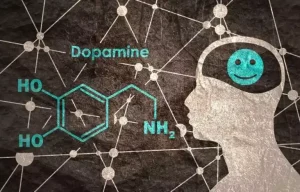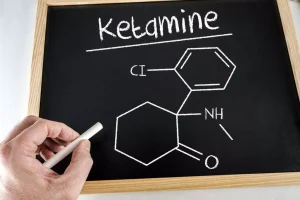That is, individuals with substance disorders use denial in order to prevent threatening emotions entering our conscious thought. Lacking the capability to cope with negative states, they will erect powerful, sometimes intransigent, defenses in a desperate effort to avoid feeling them. Keeping the unacceptable feelings out of awareness result in the development of a “false self.” The price for this protection is the inability to seek out help. For instance, an alcoholic dismisses that his or her excessive drinking is a real problem. In conclusion, denial of a general alcohol problem by individuals who admitted to multiple AUD criteria items was quite common in the SDPS, despite prodigious maximum drinking quantities.
If you’re struggling with addiction or addiction denial, reflecting on your behavior and approaching yourself with honesty and compassion can help you begin the process of recovery. Depression can fuel addiction denial by causing low emotions, unhelpful thoughts, avoidance, or escape mechanisms. These can perpetuate feelings of denial by prohibiting someone from examining their addictive behavior and addressing the issue head-on. This article explores the signs of addiction denial and when to seek help.
No one wants to watch a loved one experience AUD or any other health condition. You can offer support to someone with AUD who is in denial and take steps to ensure you’re not enabling their drinking, but you can’t make them get help. For these individuals, dishonesty can be intentional or unintentional. They may lie to simultaneously maintain their drinking habits and their relationships with loved ones. They may also engage in evasion, deception and manipulation to distort the truth about their alcoholism.
- Researchers estimate that up to 50% of people who would benefit from personalized care remain unaware that resources are available.
- One striking finding involved the 4% of AUD probands overall who admitted to tolerance in the prior five years compared to 57% who endorsed tolerance in AUD offspring.
- Imagine you have an orange-tinted pair of glasses on- everything will look orange, right?
- For example, instead of saying, “You need to stop drinking! You’re ruining your life!” try saying, “I’ve noticed changes in your behavior lately, and I’m concerned about you. Is everything okay? I’m here for you.”
- Secondary denial is a form of denial that doesn’t come from the alcoholic, but from the people they surround themselves with.
Mental Health
Denial explains why drug use persists in the face of negative consequences (Pickard, 2016). If they remain ignorant about the negative consequences of their actions, then these consequences cannot guide their decision-making. Research suggests that denial may be experienced by people with alcohol use disorder. Some people with alcohol use disorder hide or deny they have difficulty with alcohol use. There are many reasons why someone would do this, like fear of societal rejection or being “blamed” for their condition.
Several additional findings in Tables 1 and and33 were not supported in regression analyses where multiple significant characteristics were evaluated together (e.g., the SRE result and possible offspring group differences in sensation seeking). Tables 3 and and44 focus on 176 AUD offspring who were primarily European American, 40% of whom were women, 29% had ever been married, and individuals who reported on average 15 years of education. Sixty-two percent met interval criteria for alcohol dependence, they reported on average 11 maximum drinks per occasion and endorsed an average of four AUD criteria. One in five smoked cigarettes in the prior 5 years, 80% used cannabis, 19% had a cannabis use disorder, and 37% had used other illicit drugs, including 3% who developed a SUD on those substances. Comparisons of Groups 1 and 2 revealed that the 82% who were deniers were slightly younger and had lower proportions with alcohol dependence, lower average maximum drinks, and fewer AUD criteria endorsed compared to non-deniers.
In short, “there’s not a single image of AUD,” points out Sabrina Spotorno, a clinical social worker and alcoholism and substance abuse counselor at Monument. Alcohol addiction treatment centers offer a number of treatment options, and guide an individual through the recovery process. From the early stages of detoxification, or detox, to inpatient treatment, through to aftercare, addiction medicine continues to develop and support individuals in recovery. A person that exhibits a number of these symptoms is likely to be struggling with an alcohol use disorder and would benefit from a treatment program.
When you’re worried about being judged or confronted about something, honesty can take a back seat. It may be easier for the person with alcohol use disorder to hide the truth than to be honest about their drinking habits. The person with alcohol use disorder may try to justify their behaviors or offer reasonable alternatives to why something happened. There are many factors that can contribute to developing alcohol use disorder, such as stress, trauma, abuse, or any number of other circumstances. People with alcohol use disorder may experience denial, which can delay treatment.
For example, someone might express that they can handle alcohol just fine or that they only drink socially; it’s not a problem. This deflection helps them maintain control over how others perceive their drinking while avoiding facing the reality that they may have an unhealthy relationship with alcohol. Concealing is another sign of alcoholism denial, where individuals try to hide their drinking from others. They may go to great lengths to cover up harwell cause of death their habits and avoid discussing the issue when confronted.
minimize or justify problems, issues, or unhealthy behaviors
The disease affects neurochemistry, and alcoholics typically refuse to believe they have an alcohol use disorder. In some instances, their denial causes them to fail to recognize how their substance abuse is affecting their lives. Our analyses searched for potential correlates of one form of denial to help clinicians and researchers better understand denial and to optimize their ability to identify these individuals who might benefit from advice.
Depression and Addiction
Although some prior studies reported a higher rate of denial in African American and Hispanic individuals (e.g., Clarke et al., 2016), that could not be adequately tested in the SDPS sample. Table 2 presents results predicting AUD proband denier status using a backwards elimination logistic regression analysis that included variables that differed significantly across deniers and non-deniers in Table 1. Four variables contributed significantly to the analysis including three of the criteria predicted in Hypothesis 5 along with a SUD on illicit drugs other than cannabis.
As the person’s drinking continues to worsen over time, the consequences related to alcoholism increase. When it comes to overcoming alcoholism denial and taking the necessary steps toward recovery, finding the right support is crucial. It’s essential to convey a message of hope to your loved one struggling with alcoholism denial. Let them know that there are ways they can overcome their addiction and live a fulfilling life once again.
A cursory review of tolerance reports over the years in SDPS AUD probands indicated that this variable had been endorsed by AUD probands at age 35 at a rate similar to the current AUD offspring. However, the proportions of probands who reported tolerance in the five years prior to interview decreased steadily with each subsequent interview. The key aspect of the tolerance question used here might be the emphasis on the recent five-year period. It is possible that self-perceived tolerance might be strongest at younger ages when drinking is escalating but might not be as apparent as individuals maintain and decrease the maximum drinks with advancing age. Space constraints do not allow for an fetal alcohol syndrome celebrities expanded examination of the phenomenon of changes in rates of endorsement of AUD criteria as individuals age, but that question will be revisited in a future paper. The SRE records numbers of standard drinks required for up to four effects including a first effect, feeling dizzy or slurring speech, unstable standing, and unplanned falling asleep.
Signs of Addiction Denial
Many people with alcohol addiction grapple with guilt and anger, which can lead to blame. People may blame loved ones or employers for causing stress that led to their drinking problems. Or they may point the finger at a friend or co-worker for buying them a beer in the past. Half reported a biological father with DSM-III alcoholism and mesclun psychedelic half had no known alcoholic relative (American Psychiatric Association, 1980; Schuckit and Gold, 1988). Coming to the rescue of a loved one who struggles with alcohol dependence may seem like the right thing to do, but it essentially allows them to never experience the negative consequences of their drinking.
There are empathetic, actionable ways to support someone with an alcohol use disorder (AUD) who may be stuck in denial. When a loved one has a drinking problem, it’s hard to know how to help, especially if they are in denial. To find another treatment program, browse the top-rated addiction treatment facilities in each state by visiting our homepage, or by viewing the SAMHSA Treatment Services Locator. We are available to explore addiction treatment options that can help you or your loved one get the assistance needed to start recovery.













